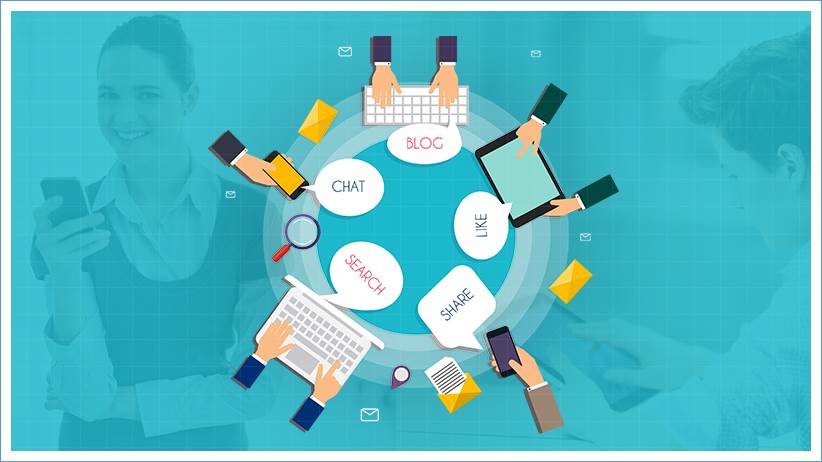
To remain competitive, firms need to adapt to the new hybrid team structure. This article outlines how L&D teams play a critical role in supporting the evolution of new competency sets required by teams and leaders for success in this unfamiliar hybrid model.
What Are High-Performing Teams?
Employees are looking for hybrid options: Some want to go into an office, and others want the flexibility of either working 100% remote or bifurcating their time between working remotely and working in the office. Regardless, most teams will consist of a mix of employees across that spectrum.
Organizations need to focus on building high-performance teams. High-performance teams do the following things well:
- Focus a diverse workforce on shared vision and common values.
- Include healthy human connections.
- Include a diverse makeup of personnel, including geographic location and work situation.
- Thrive in comparison to other similar teams.
- Autonomously manage day-to-day tasks and individuals and small project teams, inspired and directed by clearly communicated intent and vision from leaders.
L&D teams can drive the competencies required for each those items in the hybrid workplace.
Why Do Organizations Struggle to Build High-Performance Teams in the Hybrid Workplace?
The hybrid workplace – now the standard for the most competitive knowledge work companies, presents unique challenges that leaders have never faced, especially to the current degree. Some of the challenges are like what was faced in non-hybrid teams but are compounded by the virtual relationship of coworkers, their managers, and process channels. The key challenges involved in building high-performance teams include:
- A lack of clear communication and collaboration. For a long time, job descriptions included a line that said something like “required skills include clear and concise written communication.” But weaknesses in that area could be overcome by natural face-to-face conversation.
- Overwhelmed and exhausted employees. Because of the physical distance, many teams have attempted to compensate by over-scheduling already packed calendars, resulting in endless zoom meetings, extending normal work hours from early morning to late evenings.
- The great resignation caused by employees reevaluating their careers and seeking alternative employment options. They tasted the flexibility of remote work and have balked at the idea of returning to the old model that included long, stressful commutes, added expense of working outside the home, and the loss of personal flexibility remote work provided.
- Added dimension of diversity. Diversity is healthy for teams but increases work relationship complexities. Geographic and cultural diversity increases in a hybrid workplace with teams made up of employees from multiple time zones and sometimes different countries.
- Decrease in levels of trust because personal/professional relationships are more difficult to develop and foster in hybrid and remote environments. Trust is needed to lubricate the mechanics of progress and for people to feel safe enough to be creative, innovative, and take risks.
What Must Businesses Do when Building High-Performance Teams?
There are several approaches that organizations can use as they build high-performance teams, notably:
- Building opportunities for employees to interact with the firm’s vision and values.
- Training leaders to virtually collaborate with their teams, build goals that are ambitious, and align to corporate business objectives.
- Providing opportunities for employees to develop their own skills, fostering individual interests and talents so that they become highly skilled experts in their field of operation. Employees, beyond seeking a paycheck, find satisfaction and perform at higher levels when they are convinced their employer is helping them strive for mastery in their career.
- Running exercises that develop skills to virtually collaborate with team members, using advanced virtual tools like Zoom, MS Teams, Slack, and others. Email, while still useful, is time-consuming and often becomes a barrier to effective asynchronous communication. L&D teams can provide training on more advanced and modern uses of virtual meetings, web cameras, and simple hardware options like microphones that enhance distance face-to-face interactions.
- Establishing high standards for creativity and innovation, despite hybrid work environments.
How Must L&D Teams Support the Business in Building High-Performance Teams?
The responsibilities of L&D teams continue to broaden, beyond simple transactional training for job performance, and will play a critical role in building high-performance teams. Areas of focus for L&D teams in 2022 include the following:
- The mechanism and channel of leaders as they communicate the vision and values of the organization. This goes beyond the occasional email and poster hung on the wall. L&D teams can build activities that encourage employees to review the company’s core operating principles and values, internalize what they mean, evaluate them, and apply them in their day-to-day tasks. For example, a company may value the richness of a diverse feedback, so L&D teams can build into employees’ day-to-day activities time to voice their opinions, listen to others, and interact with leaders in the organization through virtual tools like Yammer.
- Build end-to-end employee learning experiences, which more closely match the evolving expectations of the workforce.
- Leverage effective rapid training development practices to employ on-the-job and in the flow of work upskilling and reskilling. This contributes to building high-performance teams. Organizations can no longer afford the time and expense it takes to hire for skills. They must locate high potential employees and develop within them the skills and competencies required to remain competitive.
- Coach and mentor managers on how to build psychologically safe environments where experimentation and failure are valued over playing it safe and staying with the status quo is vital when building high-performance teams.
- Develop data sets to draw a stronger correlation between learning and performance.
- Lead and drive a culture of learning and continuous transformation. L&D teams can foster a high-performance culture by implementing flexible and effective learning initiatives.
- Ensure that all learning solutions are aligned to enterprise goals and values. This infuses efforts of building high-performance teams.
- Create frequent opportunities for coaching, mentoring, and healthy performance feedback loops.
Parting Thoughts
Companies building high-performance teams in the knowledge work sector must adapt to the hybrid workforce model. More employees are seeking flexibility in their careers. This article shows how L&D teams can lead and drive this transformation, building high-performance teams, within organizations by employing several strategic change initiatives, focusing on the new and evolving competencies required by a hybrid work environment.
Learn how to leverage the eLearning Trends in 2022 and design high-impact L&D programs for the hybrid workforce.
Download our eBook, ‘eLearning Trends in 2022 – A Guide for Designing High-Impact L&D Programs for the Hybrid Workforce.’



